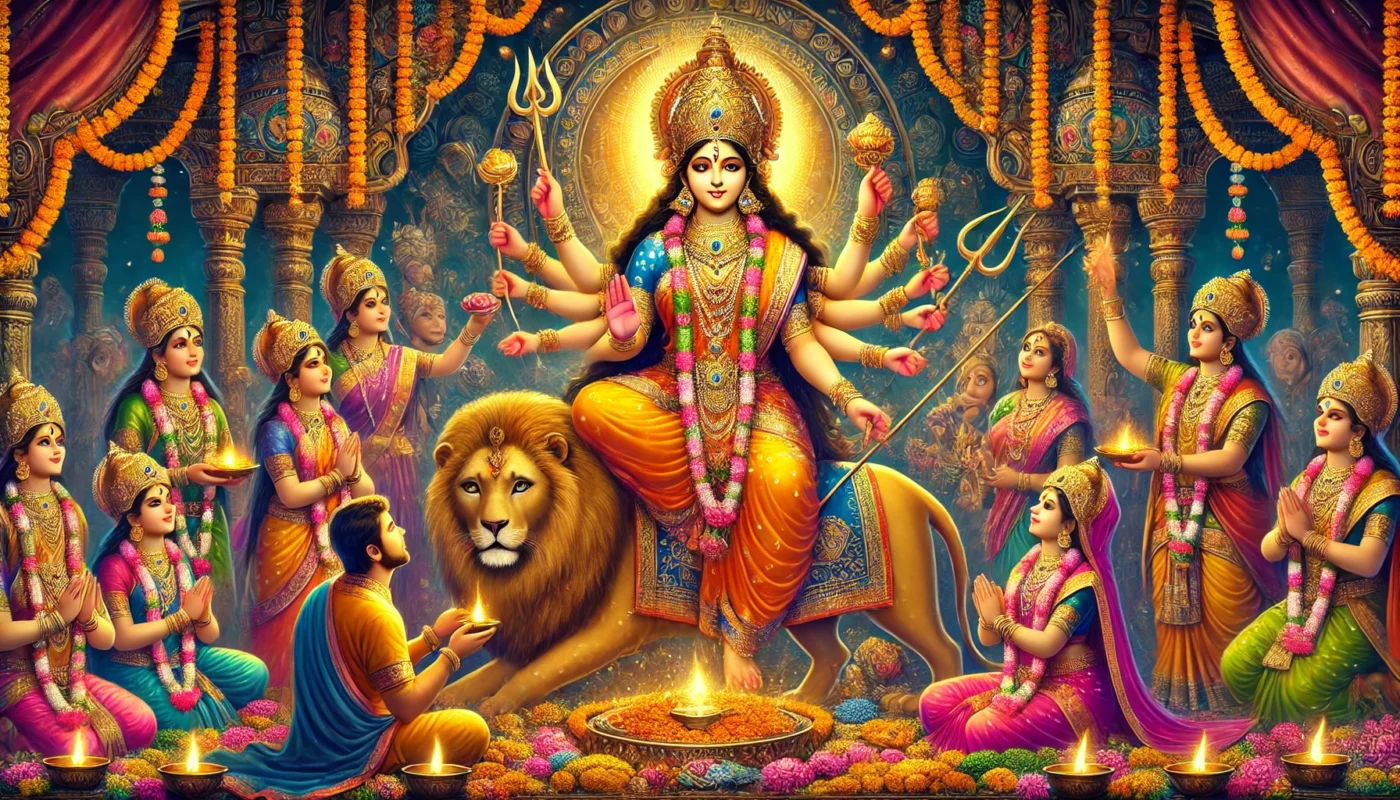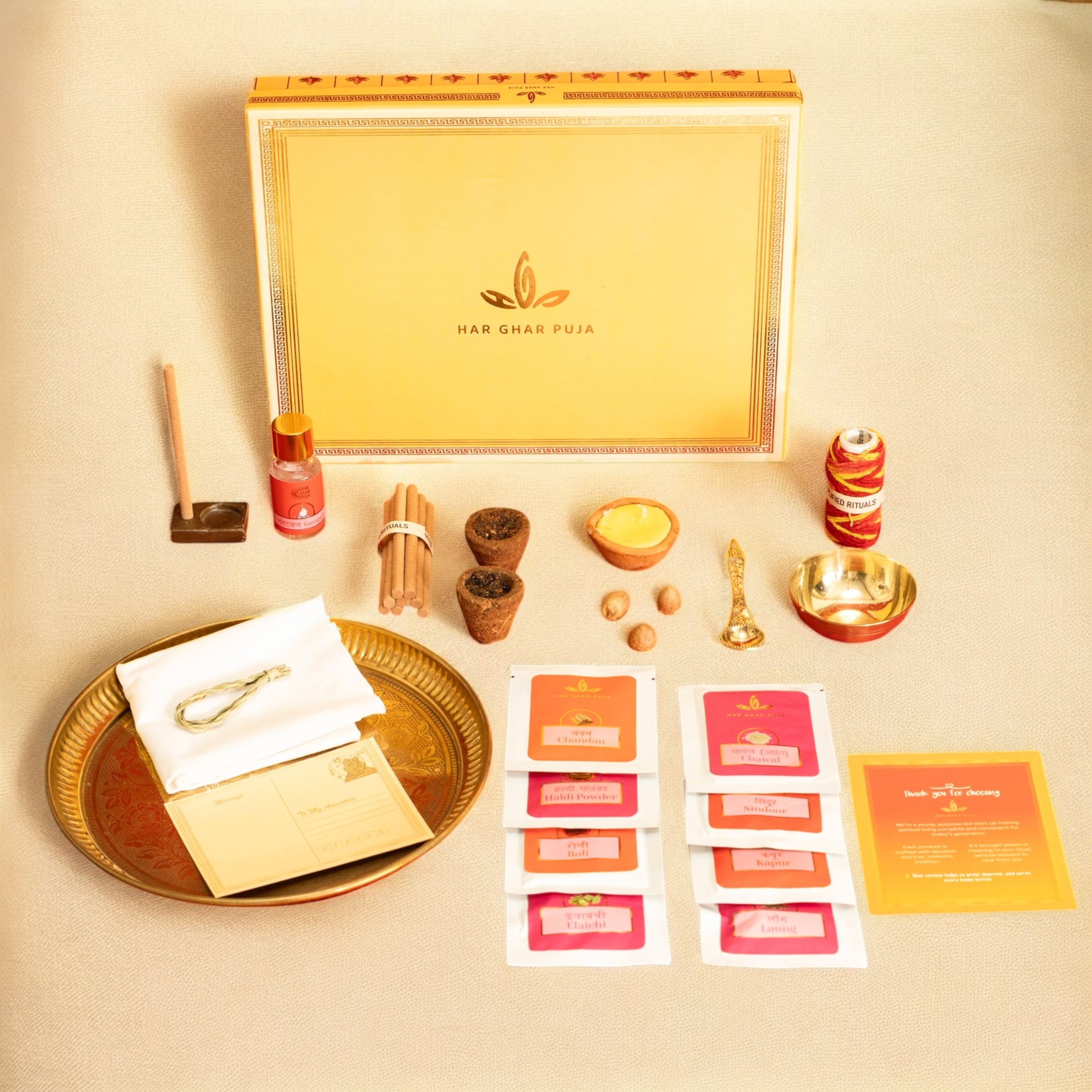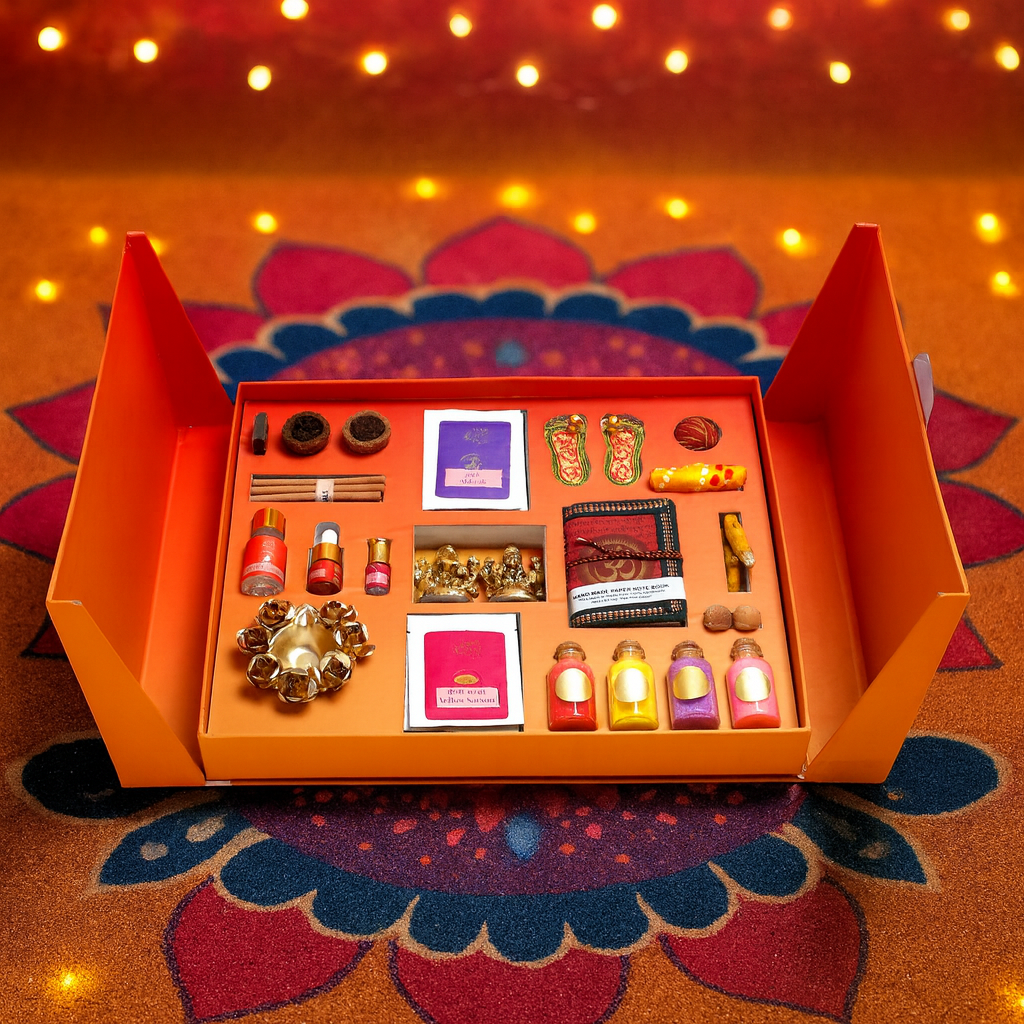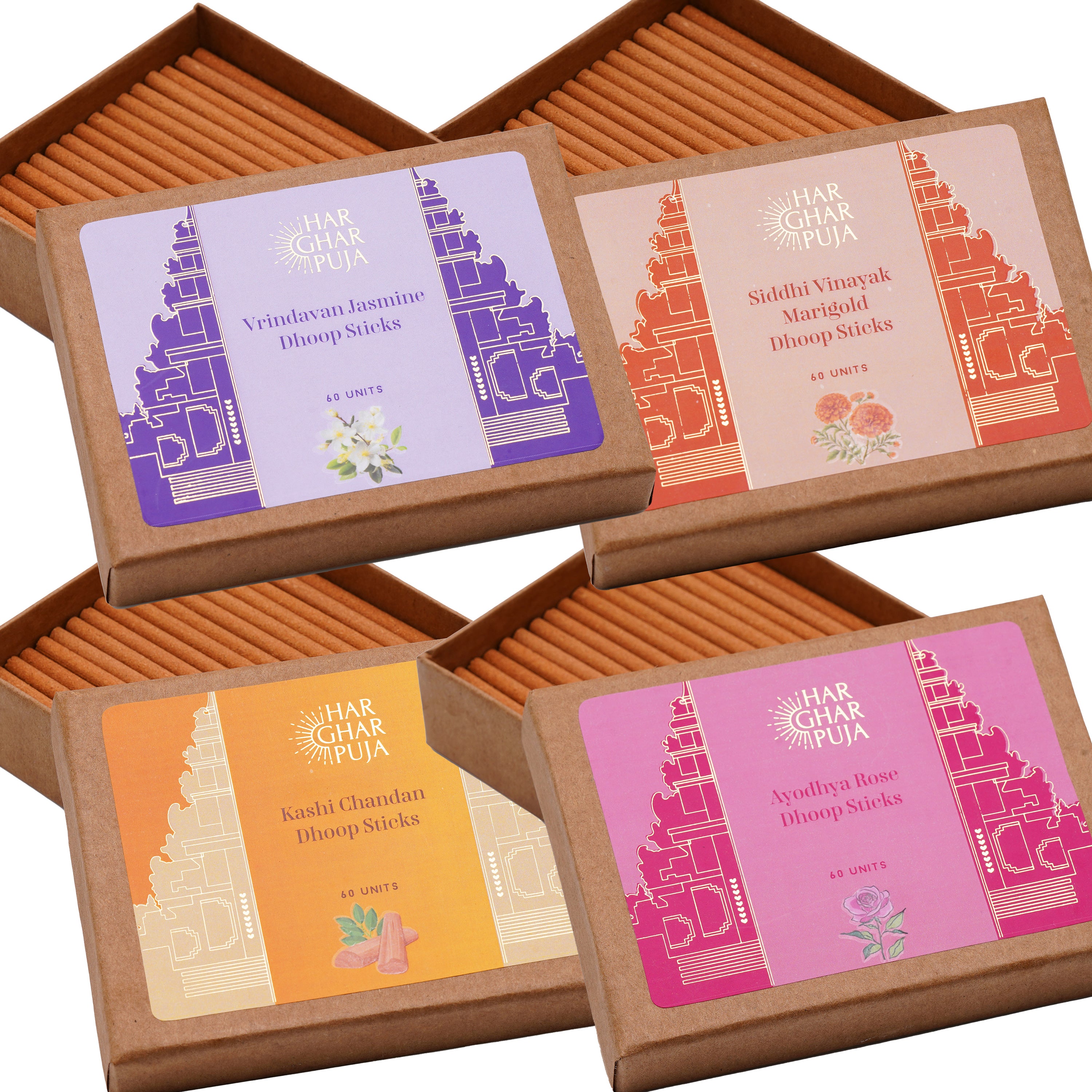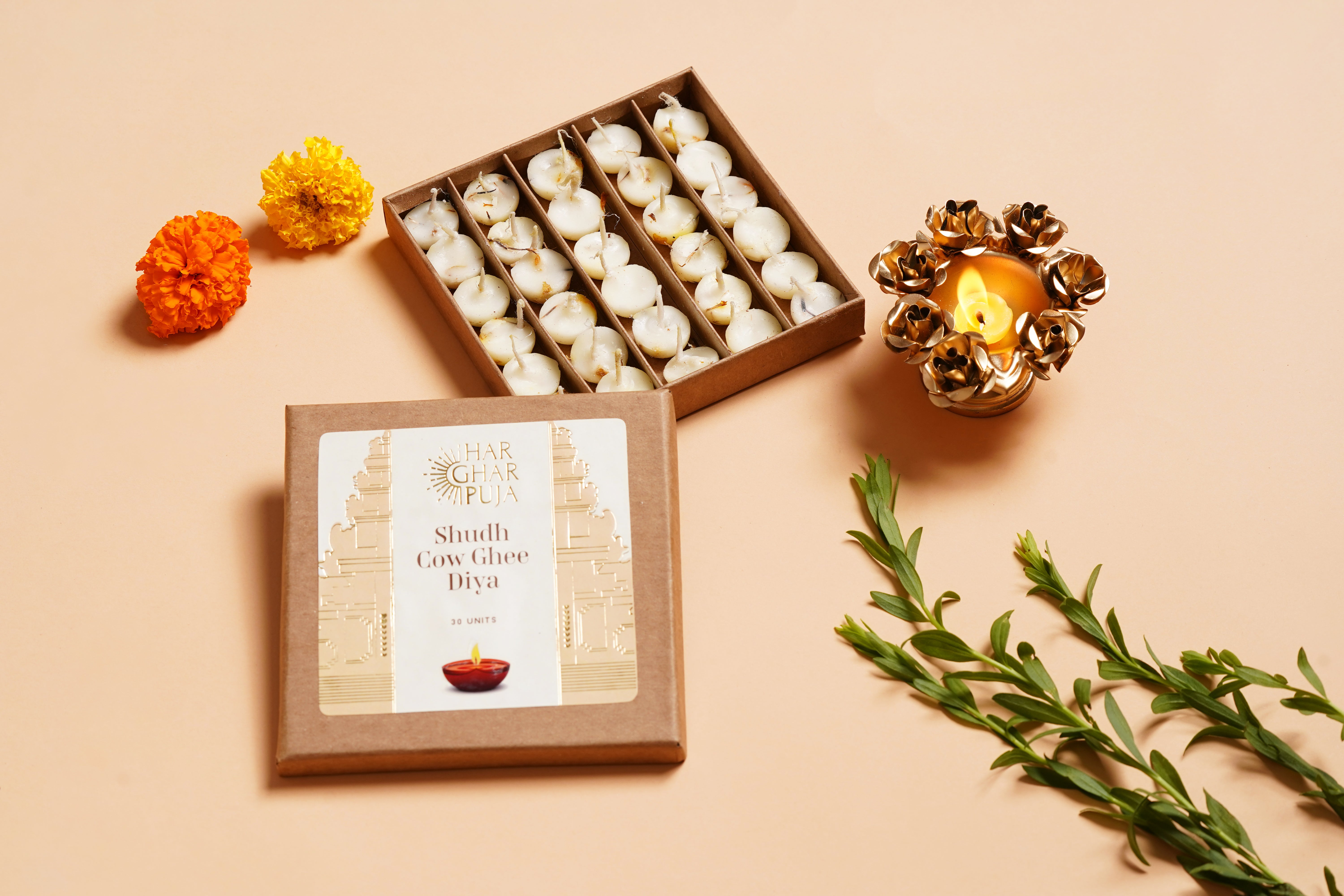A popular verse from the Mahishasura Mardini Stotra, sung by devotees during Navratri, is as follows:
अयि जगदम्बमदम्बकदम्ब वनप्रियवासिनि हासरते।
शिखरिशिरोमणि तुङ्गहिमालय शृंगनिजालय मध्यगते।।
मधुमधुरे मधुकैटभगन्जिनि कैटभभंजिनि रासरते।
जय जय हे महिषासुरमर्दिनि रम्यकपर्दिनि शैलसुते।।
Meaning: O Mother of the Universe, my beloved Mother, you reside lovingly in the Kadamba forest, always in a joyful state. You dwell in your abode atop the towering Himalayas, sweet like honey, the destroyer of the ego of Madhu and Kaitabha, immersed in divine joy. I bow to you, O Daughter of the Mountain, Mahishasura Mardini.
Table of Contents
In Hinduism, the Navratri festival symbolizes spiritual elevation, inspiring devotees to worship the Divine Mother. This festival holds immense significance among Indian festivals, as many Hindus observe fasts, perform rituals, and engage in worship during this time.

People eagerly await the arrival of these 9 days to perform spiritual practices and seek fulfillment of their desires. Over these nine days, devotees worship the nine forms of Goddess Durga: on the first day as Shailputri, the second as Brahmacharini, the fourth as Chandraghanta, the fifth as Skandamata, the sixth as Katyayani, the seventh as Kalaratri, the eighth as Mahagauri, and the ninth as Siddhidatri.
The Significance of Each Day of Navratri
Navratri brings enlightenment into our lives, dispelling ignorance and filling us with positive energy. This festival is a time for recognizing and embracing one’s inner strength. Navratri also guides us on the path of spirituality, connecting us to the three qualities within our consciousness: Sattva (purity), Rajas (activity), and Tamas (inertia). During the first three days, devotees worship the Tamasic nature; the next three days, the Rajasic; and in the final three days, the Sattvic nature.

The nine-day celebration is filled with religious customs and vibrant traditions across Sanatani households. In Hinduism, Navratri holds great importance as people worship Shakti, the Goddess of power, over these nine days. For 24 hours a day, there is enthusiasm in worship, with family members performing bhajans and aartis. The energy of nighttime gatherings, such as jagrans and Garba dances, makes this festival even more special.
Navratri Celebrations Across the Nation
This festival is celebrated with great enthusiasm across different regions of India and is known by various names. Some celebrate it as Durga Puja, while others observe it as Navratri, immersing themselves in devotion.
You can buy our pure and authentic pooja essential items from this link.
The Meaning of Navratri
Navratri means “nine nights.” These nine nights begin from the day after Amavasya (new moon) and are a special period dedicated to the Goddess, who represents the feminine aspect of divinity. Durga, Lakshmi, and Saraswati represent three dimensions of the feminine spirit.
Those who seek strength or power worship forms like Durga, the Earth Mother, or Kali. Those who desire wealth or material blessings worship Lakshmi or the Sun. Those who seek wisdom or aspire to transcend the limitations of the physical body worship Saraswati or the Moon.
During these nights, due to the unique alignment of planets, the universe is filled with divine energies. Yajnas, bhajans, worship, mantra chanting, meditation, and other practices are performed to channel this energy. People observe fasts and practice discipline to purify themselves.
Navratri is a festival that provides direction to one’s life. If you also wish to worship the Mother Goddess, dedicate yourself to this Navratri with rituals, devotion, and fasting to fill your life with positive energy.

